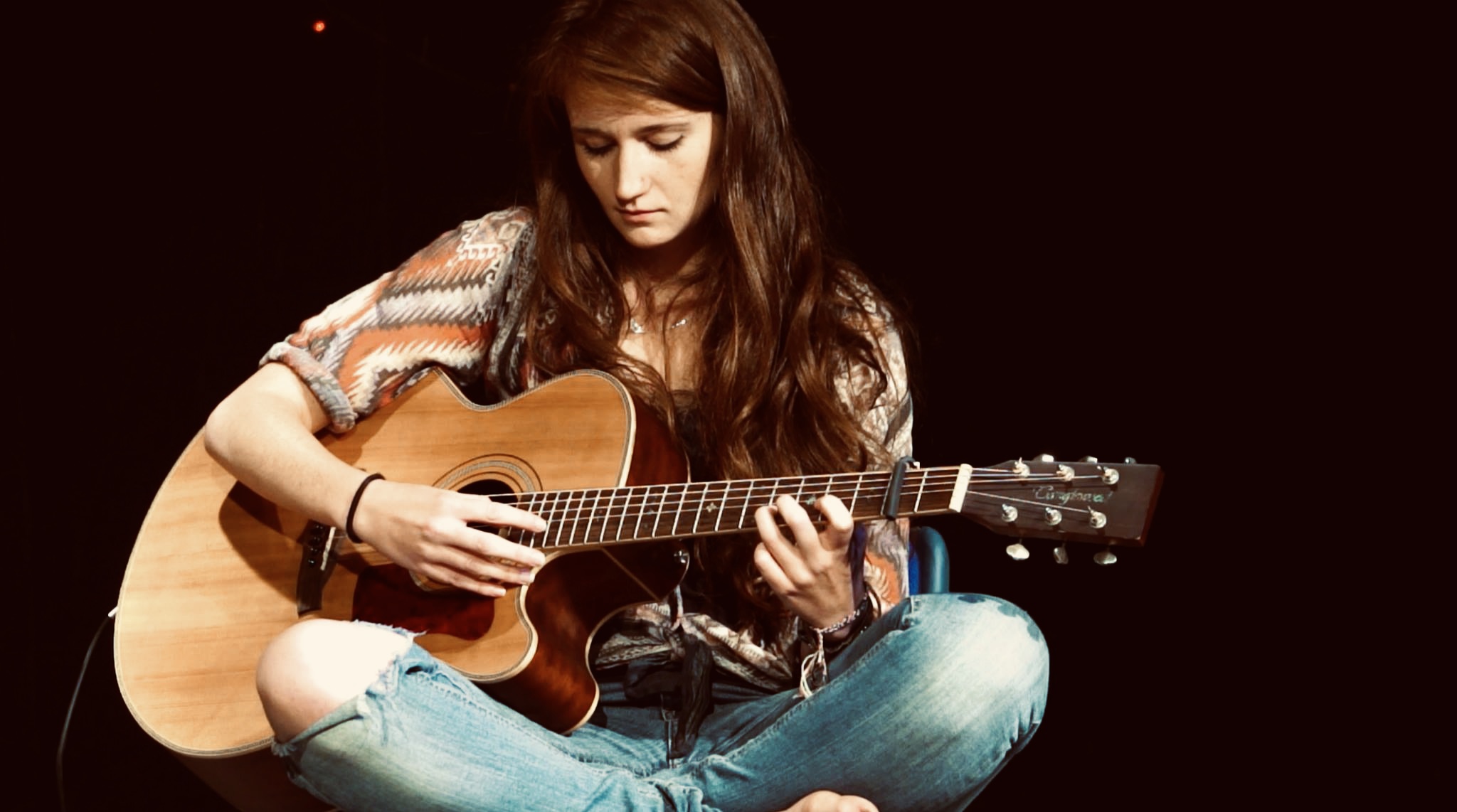Sophie Lloyd shares her advice for future guitar YouTubers: "The hardest thing to do is to post that first video because it’s putting yourself out there and it’s quite scary – I’d say forget all of that, you just need to do it!"
Interview: The UK guitarist talks playing, video tips and why learning by ear is the best way

Like a lot of guitar players, Sophie Lloyd grew up listening to her dad’s classic rock record collection. Bands like Led Zeppelin and Black Sabbath gave way to a love of what she describes as the “big emo burst” of the mid-2000s, and after a few classical guitar lessons at school, she got her first electric guitar and taught herself to play - mostly by watching videos online - before eventually going on to study music at university.
Unlike a lot of guitar players, however, she had the guts to start posting her early progress online with a series of homemade cover versions of songs by her then favourite bands, including the likes of Green Day, Avenged Sevenfold and Black Veil Brides. Fast forward nine years, and the series that was originally intended to be just “a video diary kind of thing,” has developed into one of the most popular YouTube channels of its kind. Famed for her ‘shred’ versions of classic rock and pop tunes, Sophie’s become a trailblazer in this new, social media-driven world of music careers that simply didn’t exist a decade ago.
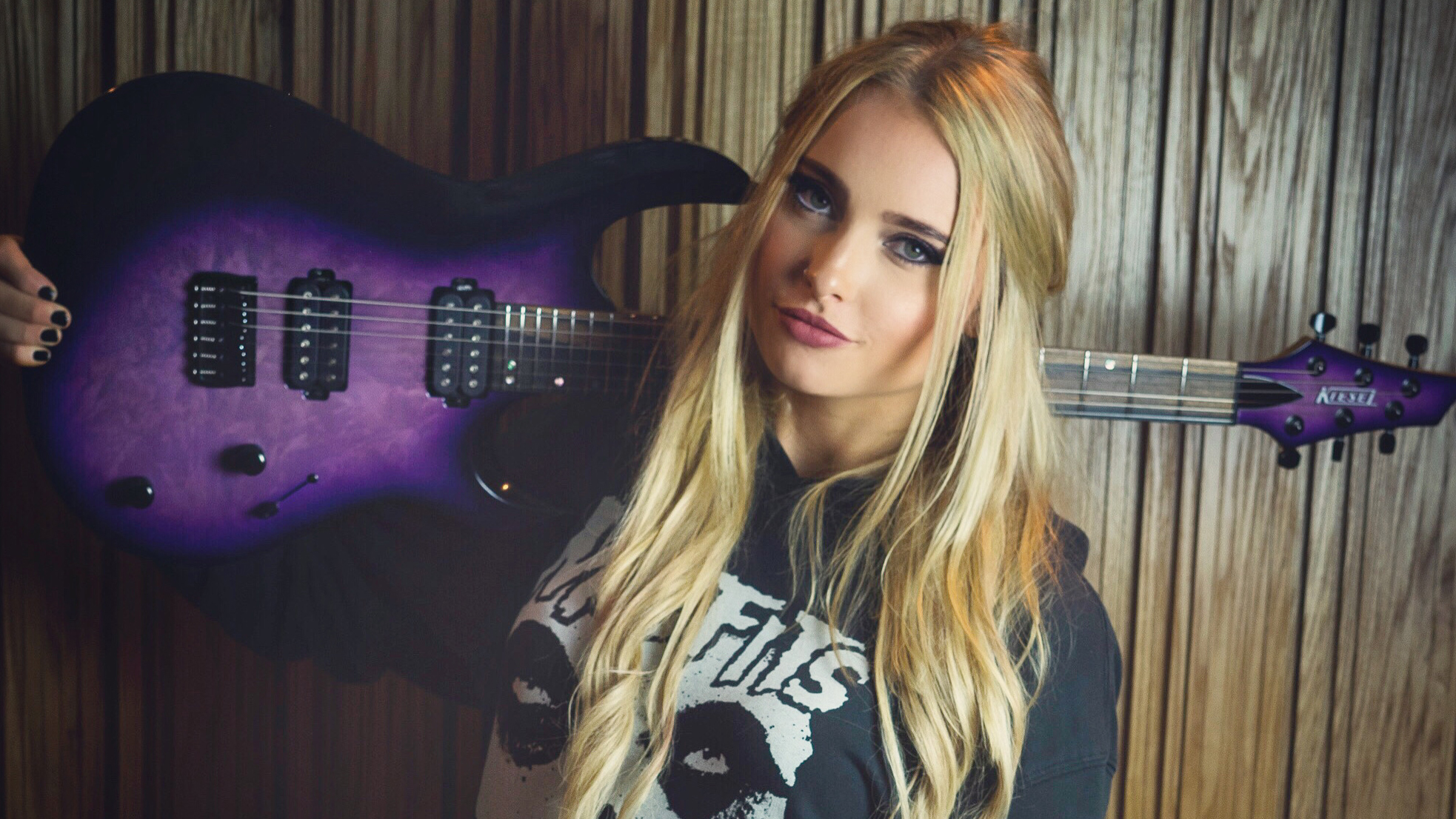
With 718k subscribers on YouTube, 600k followers on Instagram, a dedicated paying fanbase on Patreon and an ever-growing new one on Twitch, she’s got her playing skills and her business skills absolutely dialled.
Now, with her brand new studio album still to look forward to – which features an all-star cast of guest collaborators – Sophie’s gone from playing in her bedroom surrounded by posters of her heroes like Trivium's Matt Heafy, to actually recording with the man himself.
It’s an inspiring trajectory, and lucky for us, Sophie was more than happy to catch-up and share the top tips and tricks she’s learnt along the way. From learning the basics to interpreting classic tracks and finding an online USP, right through to overcoming the anxieties and hangups that inspired her new album’s title, it all started with plucking up the courage to go ahead and post that very first video.
I would advise that learning by ear is always the best way
These days, there’s a lot of different ways to learn to play guitar. Based on your experiences, would you advise people who are starting out to find a guitar tutor in person or use online teaching?
"I think everyone’s different with how they learn so it’s about knowing how you'd learn. I think practical experience with a guitar teacher is really valuable because jamming with someone else builds confidence. Because of what I did - I did a lot on YouTube - I developed a little bit of performance anxiety. Everything was so isolated, if you know what I mean?
Want all the hottest music and gear news, reviews, deals, features and more, direct to your inbox? Sign up here.
"YouTube’s nice because it’s so convenient. You could be in your bed, in your pyjamas, and just be practising mindlessly which is really nice. So I’d say, honestly, the best thing would be a combination of both."
Nowadays, when you’re working out parts for your instrumental shred versions of songs, do you do it all by ear, or with tabs and online videos too?
"I’ll try and do most of my stuff by ear now. I’ll sort of have tabs up as a reference but, generally, I’ll go through it and do it by ear, especially when it comes to the vocal melodies. I’ll also watch what other people have done and learn just from that.
"So it’s kind of a mix of stuff, but I would advise that learning by ear is always the best way because you’re actually going to be understanding what they’re doing a lot more. You’ll develop your ear, and you’ll get a knack for learning things quickly that way.
"It takes a while, but there’s lots of apps you can use. I used to use those when I was at uni because I was on the train for half an hour every day."
What’s your process like when it comes to trying to balance a song’s original vocal melody with pure shredding?
"I’ll always start with the basic melody, and work out the notes. Then I’ll make it a bit more guitary, adding some bends - like, if I can see there’s a whole tone step, maybe I’ll bend up to it, to make it sound a bit more guitary. Then, as it just gets sillier and sillier, I’ll just add bits in, but I always try to land on the last note of what the vocal line is so it feels like it’s still there. Even if it’s a tapping run or something, it’ll still start and finish on the note the melody’s on. That’s kind of what I’m thinking about when I’m doing that.
"It’s like having reference points to go back to. I’ll venture out and then go back so the melody is still there. In my recent one – we did Comfortably Numb by Pink Floyd – and I really stripped back my shredding and played a lot more melody stuff, and I’ve been playing more with harmonies as well, so that’s been quite fun. It’s something new I’m trying out a little bit because, you know, a lot of those things you don’t want to oversaturate with shred, even though it’s fun."
Try and develop something unique to you. Look for some sort of gap in the market and try and fill that
What advice would you give to other players who would like to start filming their playing and posting it online?
"I’d say that the hardest thing to do is to post that first video because it’s putting yourself out there and it’s quite scary. It’s quite difficult. I’d say forget all of that, you just need to do it!
"Also, don’t worry about having the right equipment. A lot of people will put it off and be like, ‘Well, once I get that new camera, I can film it,’ or whatever. Don’t wait because you’ll just be waiting forever! You know, my first videos look like they were filmed on a potato and the audio quality is awful. You’ve got to start somewhere, so I’d say, just go for it as much as you can and have fun with it.
"Try and develop something unique to you. Look for some sort of gap in the market and try and fill that. Tim Henson developed this new way of playing which I think is really cool - his kind of two-handed thing. Or you’ve got something silly like Mrs Smith, who’s this guitarist who dresses up as a granny and shreds. It’s silly things that you think might make a viral moment and might make you stand out from everyone else."
It’s thinking about yourself as a brand, or a product in a sense, and what your audience is going to want to look at, and what they’re interested in
To what extent do you think it’s useful to think of yourself as a brand, as well as a player, in order to be successful online?
"I think it’s definitely a really important part of it. It’s not just playing, it’s the whole thing of what you’re offering. That’s why I developed my shred versions to what they are. I sort of saw that gap in the market there, so I jumped in that and filled it. It’s silly things – making sure the colours match on your Instagram does push you up in the algorithm.
"It’s making sure you’ve got all the right tags on YouTube, and making sure the way your title is written is correct. The band name should always be first because it’s the most searchable – things like that.
"It’s thinking about yourself as a brand, or a product in a sense, and what your audience is going to want to look at, and what they’re interested in. You’ve got to know your audience so that you can do something that they’re going to like. Sometimes it hits and sometimes it misses, but you’ve got to try your best."
I’ve always had quite bad performance anxiety and imposter syndrome
You posted an outtake video not so long ago, which was great to see and very relatable. For anyone who’s driving themselves insane playing something over and over and not quite nailing it, could you reveal how much work you have to put in and how many takes you tend to have to do for any given video?
"Oh, so many! It’s one of those things with social media that you only ever see the final take - the perfect take - where I’m smiling in the right places. But there’s so many parts where there’s so many times I’ve messed up. I’m filming for about three hours to get that one four minute piece. So, it’s a lot and that’s why I made that video. I have the same thing when I go onto Instagram and see all these players. I’m like, “Oh, they’re so much better than me,” and the self-doubt starts to creep in. That’s why I think it’s important to show that side of it as well.
"I’ve actually started writing my shred versions now on Twitch. I’m live-streaming the whole thing so people can see the process that I go through to learn and practice them. They can see all the times I mess up and everything like that. So, I’m just trying to be a bit more open with that because I think social media is so 'Photoshopped', if you know what I mean? It’s so perfect, and it’s good for people to see the mistakes as well. "
Mistakes are part of the process for all performers, right?
"It’s something that I’ve struggled with. I’ve always had quite bad performance anxiety and imposter syndrome. That’s why I started on Twitch. All my life has been on YouTube, behind a screen, where I can edit it.
"So, when it comes to playing live, it’s so different because there’s only one take and that scares me. I usually have 40 takes. I’ve started to try and do more stuff live and show that side so that I get a bit more comfortable with it. I just feel like - with posting that stuff - you just set an unrealistic bar for yourself to hit."
What’s your number one guitar right now?
"My number one is my Aries Artist Signature A6H that I did with Kiesel. That’s always my favourite. All these other guitars are more just for display! They’re like ornaments. I just love that one so much. Everyone has that one guitar that feels like an extension of themselves. I love the way that one sounds. It’s got a nice balance between the chunk of a Les Paul style, but it plays like an Ibanez or a more shreddy guitar. It looks pretty sexy as well."
What’s your amp of choice and how do you like to set it?
"I’m kind of between amps at the moment, but on the new album, we used an EVH 5150. I can’t remember exactly which one it was, but I absolutely loved that and I’ve been trying to get my hands on one – there’s been a lot of stock shortages in the UK for stuff like that. I’ve also actually recently been using pedals quite a lot.
"I’ve been using the GX-100 and the GT-1000 from Boss, which are basically pedals that you plug straight into the mixer so you don’t really need an amp. That’s just because of travelling. My other amp is a Diezel VH4, which is a big monster. It sounds fuckin’ great, but it’s a monster to get anywhere.
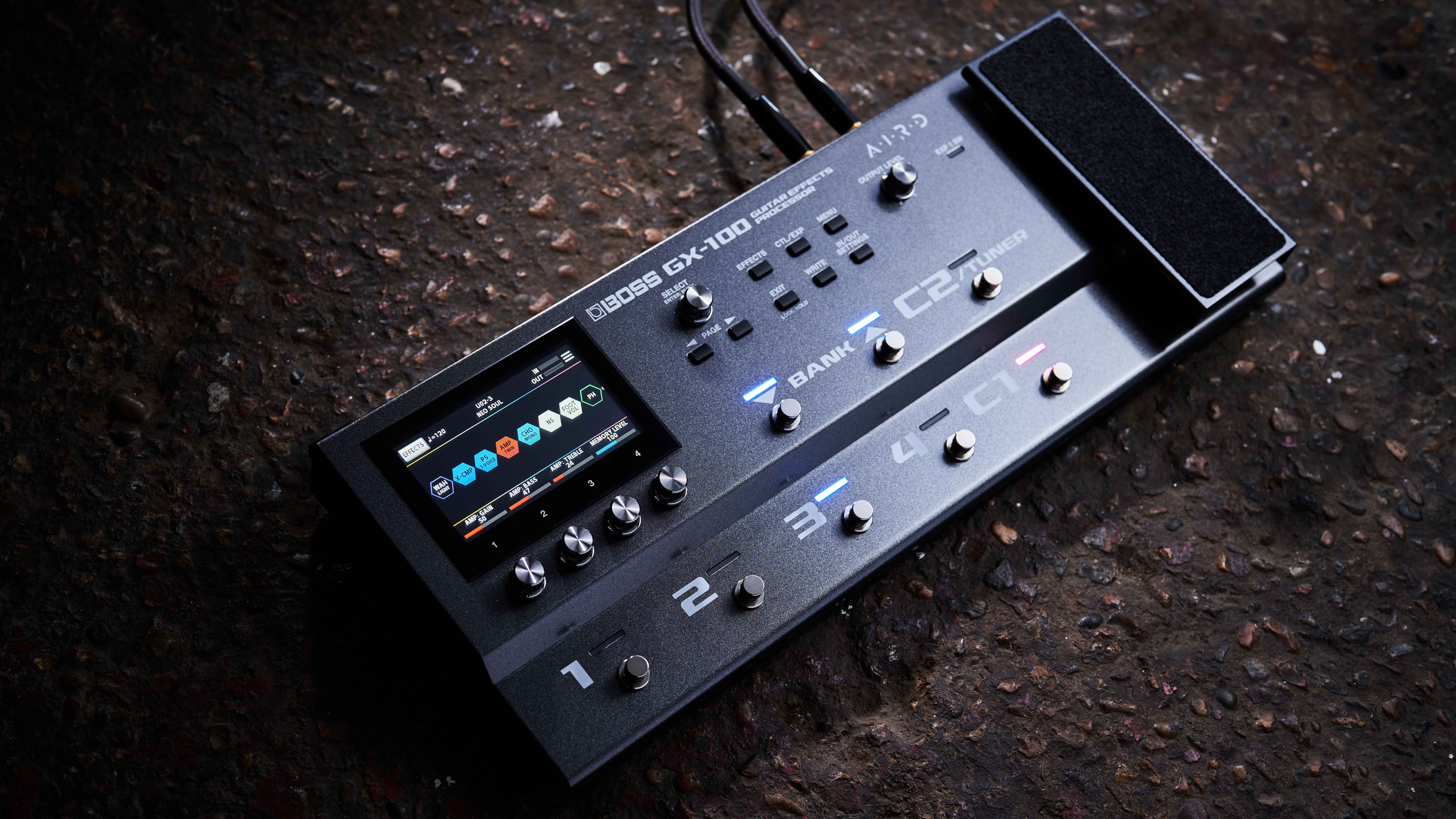
If you’re playing live, generally you want to have higher mids because that’s what’s going to cut through the noise of the band, so that’s quite important
Do you have any tips not only for getting a good guitar tone, but also for committing that tone to a recording that’s ready to go online?
"It’s tricky because my partner Chris does a lot of the final tone deciding because I’m a typical Libra and I can’t decide on anything! I’d say, once you’ve got a tone you like, definitely save it and make sure you’ve got a picture of all the knobs and where everything is. You need to dedicate an hour or two to just playing around with different things, and that’s what we’ve done with these pedals.
"If you’re playing live, generally you want to have higher mids because that’s what’s going to cut through the noise of the band, so that’s quite important. Mess around with the EQ and see what you like. If you’re not sure what you want to use, just go to a guitar shop and try lots of different amps.
"If you’re playing a lot of lead, generally you want higher gain to get pinch harmonics and stuff. There’s a lot of techniques that you’ll want higher gain for, which you kind of want to balance out by rolling the level off a little bit.
"On all my lead tones, I always like to use a bit of delay and reverb just to make it sound a bit sweeter."
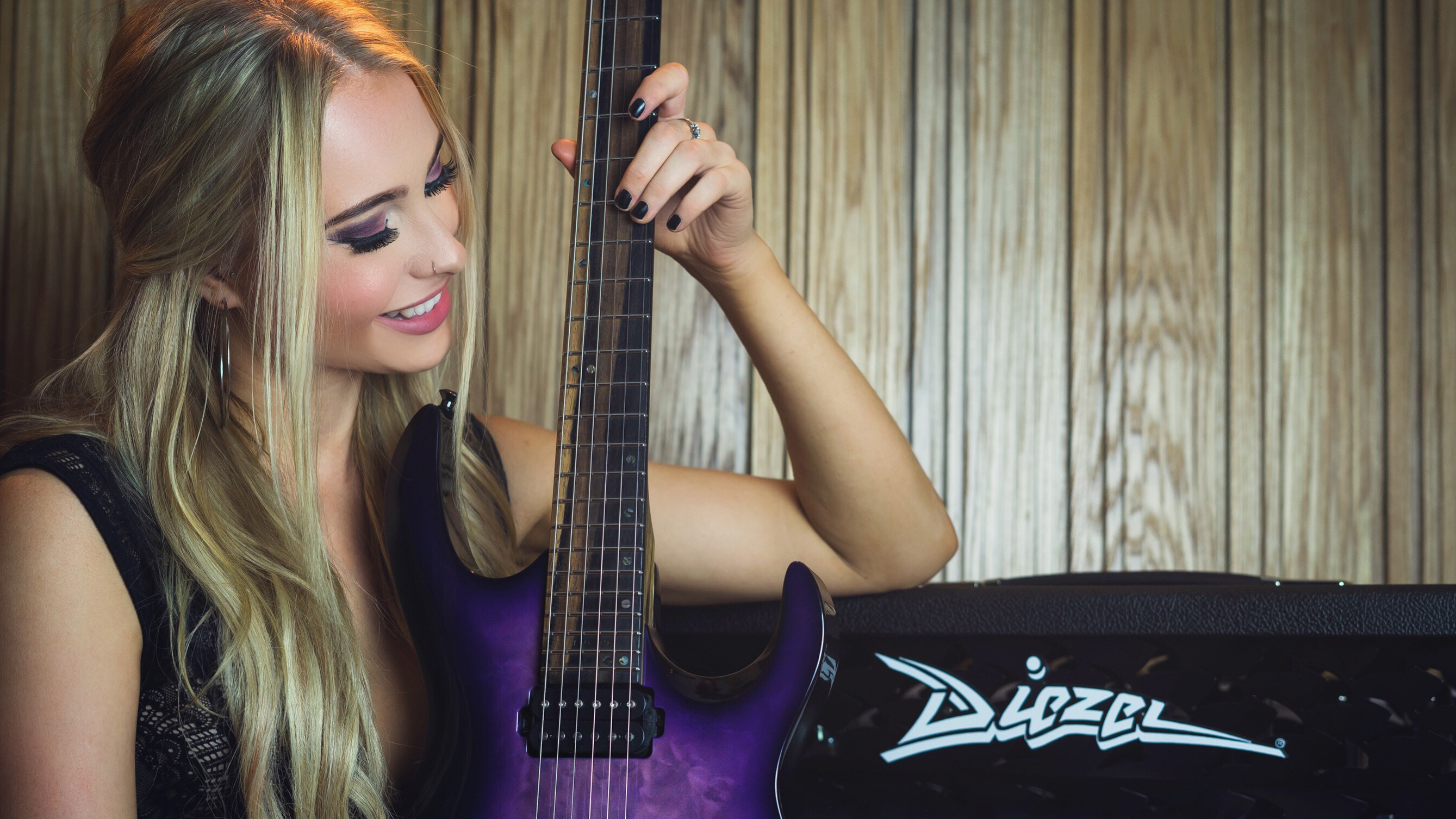
What can you tell us about your forthcoming new album that's coming late 2022 / early 2023?
It’s been a long time coming. I feel like I’ve been working on it for about a million years. I said I was writing this album for my sixteen year old self. That’s my target audience: me when I was 16. There’s a bunch of different genres on it, which is really cool, and also each song has a guest vocalist, or a guest musical artist on it. It’s kind of inspired by Slash’s R&FN’R album where he had Fergie, M. Shadows, Lemmy and all these different people.
"It’s amazing because it’s got guests on it that I used to have on my wall as a kid. Matt Heafy is on a song. We recently shot a music video together as well. There’s this picture of me recording my very first EP Delusions, where I’m wearing my homemade, iron-on Trivium t-shirt. It’s really cool now that he’s on the album - it’s so full circle. There’s some other amazing guests and I can’t wait to announce everything."
I’m very lucky to have an audience where the thing they most want from me is my original music
Will the record be original material or cover versions?
"This one is all original, which is really nice! I’m very lucky to have an audience where the thing they most want from me is my original music. The first things that blew up were my songs Delusions and After Insanity and it’s been so long since I released those that I just can’t wait to give them something else. It’s so different but I’m so proud of it."
What’s your writing process like when it comes to originals?
"Generally we’ll try and think of a riff. We’ll listen to some songs that we’re inspired by, and then we’ll basically take a riff, turn it backwards and do something to make it different. I’ll put it in a different key, then I’ll change the notes slightly, maybe turn it around, play it backwards or something like that to make it new and different. Then my partner will write a drumbeat to it and send that to me. Then I’ve got a drumbeat that I can loop and loop and loop, and try and build it up as much as I can.
"I always try to double track everything because it makes it sound heavy and powerful. Then once I’ve got a basic rhythm, I add toplines and high octaves to fill it out a bit more, and it just gradually goes on and on from there.
"A good tip is to use drum loops so you’ve got something to play to – you’ll find the ideas start flowing a lot easier than if you’re just sitting there on your own. It’s nice to have that jamming experience.
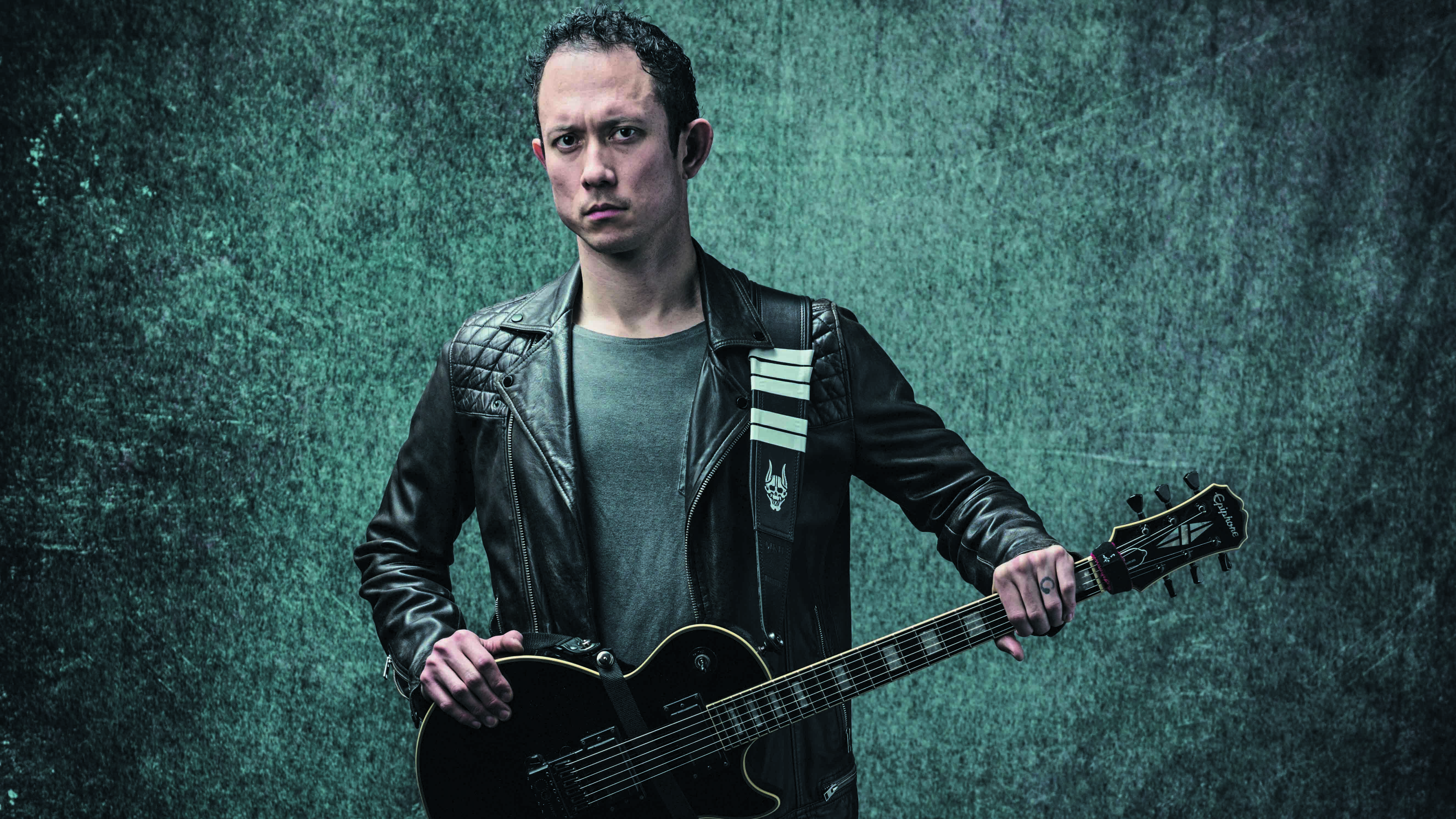
Matt Heafy interview: Trivium's chief talks training and Twitch
Will you be touring the new album?
Yes! It’s something I’ve always been super scared of. That’s the whole ‘imposter syndrome’ thing. This album is sort of me overcoming it. As soon as the album’s out, we’re hoping to go on tour relatively shortly after, so probably spring time next year. We’ll probably start in the UK, then we’re hoping to be able to go to America as well because a large part of my audience is American."
Stay updated with Sophie's music on YouTube, Instagram and Twitch
Ellie started dabbling with guitars around the age of seven, then started writing about them roughly two decades later. She has a particular fascination with alternate tunings, is forever hunting for the perfect slide for the smaller-handed guitarist, and derives a sadistic pleasure from bothering her drummer mates with a preference for “f**king wonky” time signatures.
As well as freelancing for MusicRadar, Total Guitar and GuitarWorld.com, she’s an events marketing pro and one of the Directors of a community-owned venue in Bath, UK.
